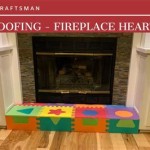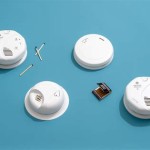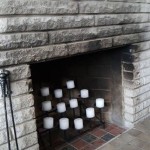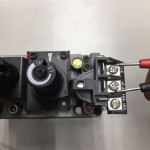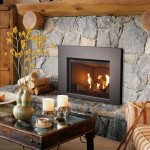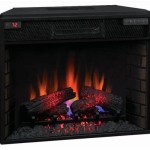Small Ventless Gas Fireplace Inserts: A Comprehensive Guide
Small ventless gas fireplace inserts offer a convenient and aesthetically pleasing heating solution for spaces where traditional venting systems are impractical or impossible to install. These units provide the ambiance of a real fire without the complexity and cost associated with chimneys or extensive ductwork. Understanding the various aspects of small ventless gas fireplace inserts is crucial for making an informed decision on whether they are the right heating option for a particular home or space.
This article will provide a detailed analysis of small ventless gas fireplace inserts, exploring their functionality, benefits, limitations, safety considerations, installation processes, and maintenance requirements. The aim is to equip readers with the necessary knowledge to assess the suitability of these inserts for their specific needs and to ensure safe and efficient operation.
Understanding Ventless Gas Fireplace Technology
Ventless gas fireplaces, also known as vent-free fireplaces, operate on the principle of complete combustion. This means that the gas, either natural gas or propane, is burned so efficiently that it minimizes the production of harmful byproducts such as carbon monoxide. To achieve this, ventless fireplaces employ oxygen depletion sensors (ODS), which continuously monitor the oxygen levels in the room. If the oxygen level drops below a safe threshold, indicating incomplete combustion and a potential buildup of carbon monoxide, the ODS will automatically shut off the gas supply, preventing any further operation until the room is properly ventilated. The efficiency of combustion is paramount to the safe operation of these units.
The absence of a chimney or vent system makes ventless gas fireplaces significantly easier and less expensive to install compared to their vented counterparts. They can be placed against an existing wall, recessed into a fireplace opening, or even mounted as a freestanding unit, offering considerable flexibility in terms of placement and design. However, this also means that all combustion byproducts are released directly into the living space, necessitating careful consideration of safety and ventilation protocols.
The size of a ventless gas fireplace insert is typically measured in BTU (British Thermal Units), which indicates the amount of heat the unit can generate per hour. "Small" ventless gas fireplace inserts generally range from 6,000 to 20,000 BTU. This makes them suitable for heating smaller rooms or providing supplemental heat in larger areas. The appropriate BTU rating should be determined based on the size of the room and the desired level of heating.
Advantages of Small Ventless Gas Fireplace Inserts
One of the most significant advantages of small ventless gas fireplace inserts is their ease of installation. Unlike traditional fireplaces that require extensive venting systems, ventless units can be installed relatively quickly and with minimal disruption to the existing structure. This translates into lower installation costs and a shorter project timeline. Often, the installation involves connecting the gas line, placing the insert into the desired location, and ensuring proper leveling and stability.
Another key benefit is their high energy efficiency. Because no heat is lost through a chimney or vent, ventless gas fireplaces can achieve efficiencies of up to 99%. This means that almost all of the gas consumed is converted into usable heat, resulting in lower energy bills compared to traditional fireplaces or electric heating systems. This efficiency makes them an attractive option for homeowners seeking to reduce their energy consumption and lower their heating costs.
Ventless gas fireplace inserts also offer aesthetic appeal. They are available in a wide range of styles, finishes, and designs, allowing homeowners to choose a unit that complements their existing décor. From modern and minimalist designs to more traditional and ornate styles, there is a ventless gas fireplace insert to suit virtually any taste. The realistic flame effects and glowing embers further enhance the ambiance, creating a cozy and inviting atmosphere.
Furthermore, many ventless gas fireplace inserts come equipped with convenient features such as remote controls, thermostats, and programmable timers. These features allow users to easily adjust the heat output, set desired temperatures, and schedule the fireplace to operate automatically, providing enhanced comfort and convenience.
Safety Considerations and Limitations
Despite their numerous advantages, ventless gas fireplace inserts are not without limitations and require careful consideration of safety protocols. The release of combustion byproducts into the living space necessitates adherence to strict safety guidelines to ensure the well-being of occupants. Proper ventilation is crucial. Although the ODS system provides a safety net, it is essential to supplement it with adequate natural or mechanical ventilation, especially during prolonged use. Opening a window or using a ceiling fan can help circulate air and prevent the buildup of potentially harmful gases.
Many jurisdictions have regulations regarding the use of ventless gas fireplaces, including restrictions on room size, maximum BTU input, and required ventilation. These regulations are designed to minimize the risk of carbon monoxide poisoning and other health hazards. It is essential to check with local building codes and obtain any necessary permits before installing a ventless gas fireplace insert.
Another limitation is the potential for moisture buildup. As the gas burns, it produces water vapor, which can increase humidity levels in the room. In poorly ventilated spaces, this can lead to condensation, mold growth, and other moisture-related problems. Using a dehumidifier or ensuring adequate ventilation can help mitigate this issue.
Furthermore, ventless gas fireplaces are not recommended for individuals with respiratory problems, such as asthma or COPD, as the combustion byproducts can exacerbate their condition. In such cases, alternative heating options, such as electric fireplaces or vented gas fireplaces, may be more suitable.
The ODS system is a critical safety feature, but it is not infallible. It is essential to regularly inspect and maintain the ODS to ensure it is functioning correctly. Dust, debris, or other contaminants can interfere with the ODS sensor, potentially compromising its ability to detect oxygen depletion. Regular cleaning and maintenance, as recommended by the manufacturer, are essential for safe operation.
Installation and Maintenance Procedures
The installation of a small ventless gas fireplace insert typically involves the following steps: First, the gas supply line must be properly connected to the unit. This should be done by a qualified gas technician to ensure a secure and leak-free connection. Next, the insert is placed in the desired location, ensuring it is level and stable. If the insert is being recessed into a fireplace opening, the opening must be properly prepared to accommodate the unit. Finally, the gas supply is turned on, and the fireplace is tested to ensure it is operating correctly.
Regular maintenance is essential for ensuring the safe and efficient operation of a ventless gas fireplace insert. This includes cleaning the burner assembly, inspecting the ODS sensor, and checking for any gas leaks. The burner assembly should be cleaned periodically to remove any dust, debris, or carbon deposits that may have accumulated. The ODS sensor should be visually inspected to ensure it is clean and free from obstructions. A gas leak detector can be used to check for any leaks in the gas supply line or connections.
The frequency of maintenance will depend on the usage of the fireplace and the environmental conditions. However, it is generally recommended to perform a thorough inspection and cleaning at least once a year. Additionally, it is important to follow the manufacturer's instructions for maintenance and troubleshooting. If any problems are detected, it is crucial to contact a qualified service technician for assistance.
It is also important to educate all occupants of the home about the safe operation and maintenance of the ventless gas fireplace. This includes explaining the purpose of the ODS sensor, the importance of ventilation, and the potential hazards associated with improper use. Providing clear instructions and guidelines can help prevent accidents and ensure the long-term safe operation of the unit.
In summary, small ventless gas fireplace inserts offer a convenient and efficient heating solution for spaces where traditional venting systems are not feasible. However, it is essential to carefully consider the safety implications and limitations associated with these units and to adhere to strict safety guidelines to ensure the well-being of occupants. Proper ventilation, regular maintenance, and adherence to local building codes are crucial for the safe and efficient operation of ventless gas fireplaces.

Small Fireplaces I Hearthcabinet Ventless

Empire Small Vent Free Fireplace Insert Fine S Gas

Empire Innsbrook Small Vent Free Gas Insert Vfpc20 North Country Fire

Duluth Forge 34 In W 32000 Btu Black Vent Free Dual Burner Gas Fireplace Insert And Remote The Inserts Department At Com

Procom Universal Ventless Firebox 170016 The Home Depot

Vantage Hearth Vent Free Gas Fireplace Mini Classic

Empire Small Vent Free Fireplace Insert Fine S Gas

Empire 29 Loft Small Vent Free Gas Fireplace Insert Vflc20in Us

Duluth Forge 27 In W 26000 Btu Black Vent Free Dual Burner Gas Fireplace Insert And Remote The Inserts Department At Com

Procom Heating Ventless Fireplace Insert Thermostat Control Arched Door 15 000 Btu 170172 The Home Depot
Related Posts


